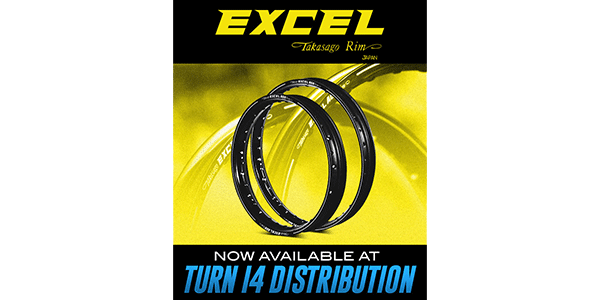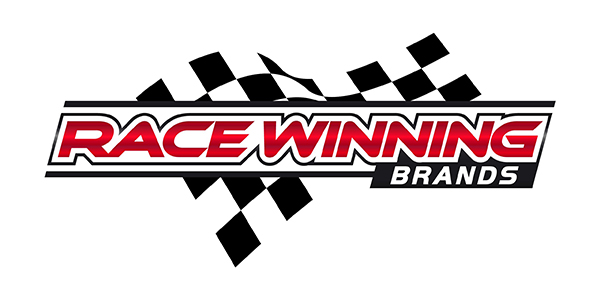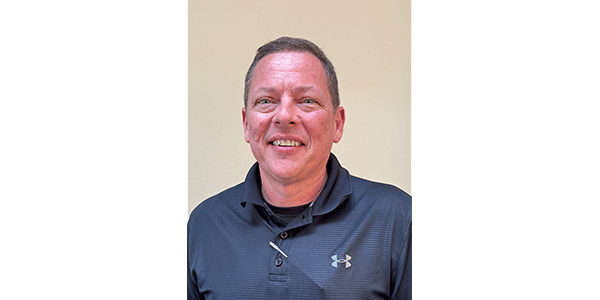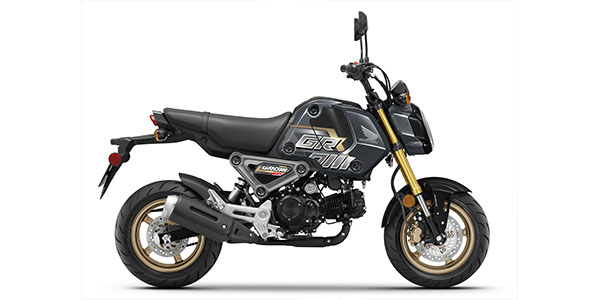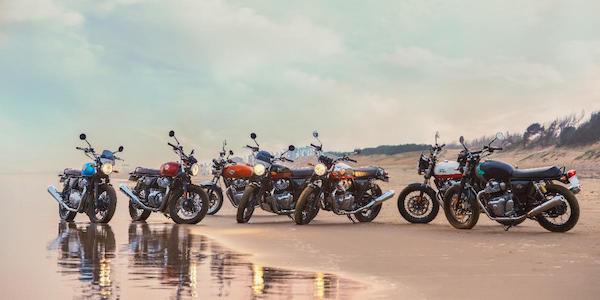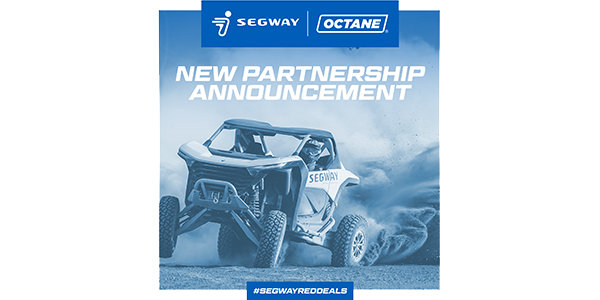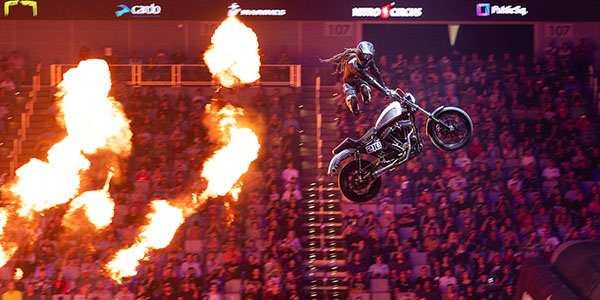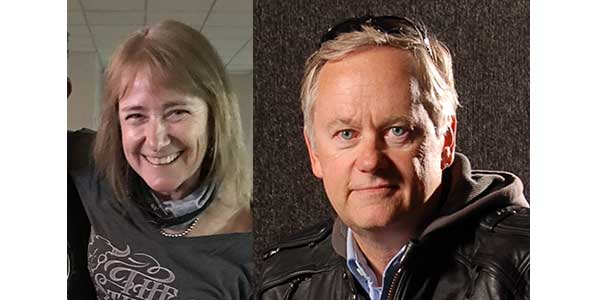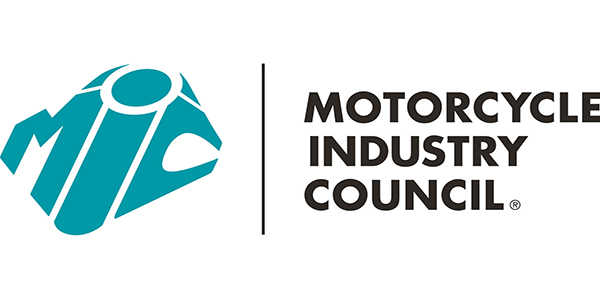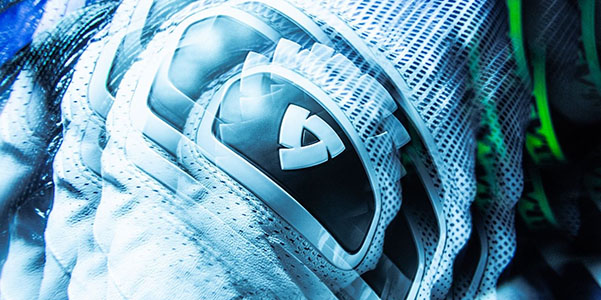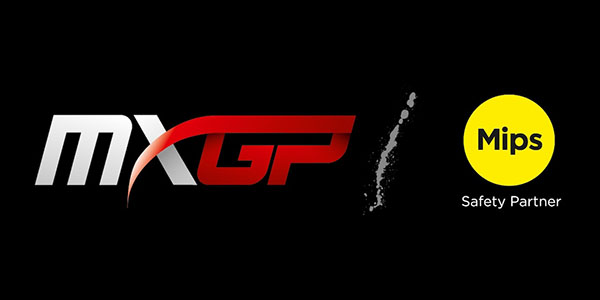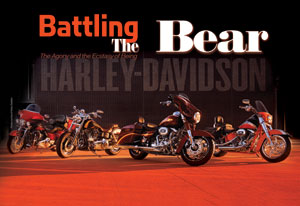
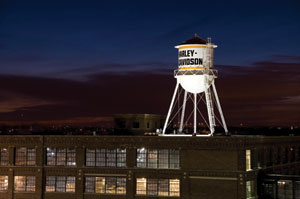
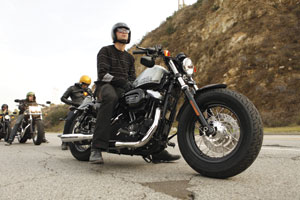
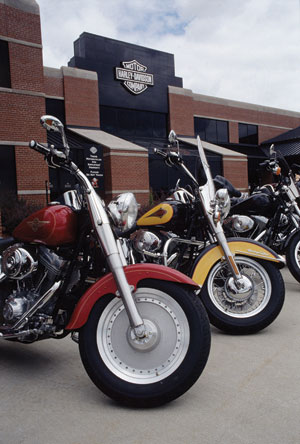
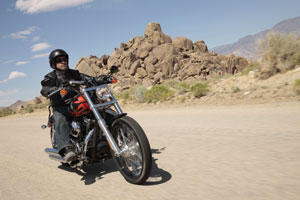 To celebrate the 105th Harley-Davidson anniversary in 2008, Milwaukee threw another memorable bash. The faithful flooded the town to catch entertainment ranging from the Foo Fighters and Bruce Springsteen to UFC fights and hot model contests. Dealerships for miles around hosted their own events, and droves of riders made the pilgrimage to Milwaukee.
To celebrate the 105th Harley-Davidson anniversary in 2008, Milwaukee threw another memorable bash. The faithful flooded the town to catch entertainment ranging from the Foo Fighters and Bruce Springsteen to UFC fights and hot model contests. Dealerships for miles around hosted their own events, and droves of riders made the pilgrimage to Milwaukee.
Three old friends — Wade Fletcher, Brad Weber and Brian Glynn — were cruising on Harley-Davidsons from event-to-event. This wasn’t anything new for the southern Wisconsin trio.
“The three of us have been lifelong colleagues and friends and riding companions for pretty much our entire existence on this earth,” Weber said. “We’ve seen the country from the seats of our bikes. Wherever we go, we find ourselves at Harley- Davidson dealerships.”
For years, they had talked about quitting their management jobs at manufacturing companies to run a motorcycle dealership. During their ride at the 105th, the guys decided the time was right to get serious. They put in the paperwork and began to search for a location. They eventually found a beautifully redone 37,000-sq.ft. dealership located near Oconomowoc, Wis. The owners were reluctantly selling.
After some analysis and thought, Weber, Fletcher and Glynn signed on the dotted line in 2009. They exchanged their corporate lives for the daily roller coaster of running a motorcycle dealership.
The twist on this familiar story of escape is the times. Early 2009 was a terrible time to sell motorcycles.
“About 50 percent of our friends and associates said we were crazy,” Weber said. “But the other 50 percent said we were brilliant.”
Considering what the mainstream press had to say about the Motor Company in 2009, crazy was the foregone conclusion. Forbes magazines posted the headline, “Harley Hammered” (Jan. 12, 2009) and, during the same time period, Goldman Sachs recommended that its customers sell the stock. Market reporting website SeekingAlpha.com declared, “Company Death Watch: Harley-Davidson.” Even the more level-headed New York Times reported in March 2009 that, “Harley’s road has perhaps never looked so hazardous.”
Harley-Davidson was (and is) in a decidedly tight spot. The company was laying off employees and closing plants. Earnings and sales were down by 30 percent, and stock prices plunged 70 percent, bottoming out in February 2009.
One of the most frightening bits of news out of The Motor Company came when the company publicly appealed for a bailout early in 2009. The government declined.
Warren Buffett stepped in with a $300 million loan, topped with another $300 million from H-D’s top investors, Davis Selected Advisors L.P. The cash was used to fund the ailing financial services division arm.
“This offering represents an important next step in executing our stated strategy for funding the lending activities of HDFS,” said Thomas E. Bergmann, H-D CFO, in 2009.
Pundits said the $600 million bought Harley-Davidson a few months, at best. They were wrong, but at the time, the headlines for Harley were grim.
In this environment, Weber and his old friends left secure jobs to buy and run a dealership. This led many to ask, why?
“We performed an extensive due diligence,” he said. The dealership’s solid core of experienced staff, newly renovated facilities, and location in a stable market convinced the men that their decision was sound.
“We live by the philosophy you don’t get rewards without some risk.”
Weber also cited the strength of the brand.
“I don’t know of any other brand that people tattoo on their bodies,” he said, echoing Warren Buffet’s comment at a 2010 Berkshire Hathaway shareholder’s meeting. “The brand has withstood a lot tougher times than what we have just gone through.”
That isn’t something you’ll read much about in mainstream media as of late. When the company made the most of a bit of good news that the first quarter of 2010 exceeded expectations with a profitable return, Chuck Jaffe of Marketwatch retorted by dubbing Harley-Davidson stock the “stupid investment of the week.”
Jaffe’s a financial advisor with a significant readership, which doesn’t mean he’s right. Harley-Davidson was ranked as the world’s 45th-most valuable brand in 2006 by Interbrand, and the company sunk all of five places in 2009 to 50th. Harley-Davidson as a brand is right where it’s always been.
Harley-Davidson has also discovered, like the Yankees and the Cowboys, that success breeds contempt. Pundits inside and outside the motorcycle industry have predicted that the wave of growing popularity that started in the mid-1990s would eventually wane and crash. But the broad swath of people who make up the heart of America love Harley-Davidson. That isn’t about to change overnight.
As Weber pointed out, the company has survived tougher times. The Great Depression was particularly hard, and many dealerships sold no motorcycles at all in 1933. The early 1940s were also challenging for the company, and the sale to AMF is probably the closest they came to slipping off the charts and into the history books.
The immediate needs for the company are to increase profitability with reduced sales. The surprisingly quick recovery of the trouble H-D Financial Services division is a big step in the right direction. Showing a profit in the first quarter of 2010 is also a possible indication that the company is mending the proper fences.
The company does face long-term challenges. The opportunities overseas are there, but penetrating complex markets like China and India is hardly simple. The company made good progress in February 2009 when the State Department finagled a deal that allowed Harley-Davidson to import motorcycles in exchange for the U.S. allowing India to export mangoes. The market in India for heavy motorcycles has great potential due to the country’s size, but bear in mind that the vast interest in motorcycles in that country is for cheap transportation, something that Harleys are not.
Harley-Davidson also has the widely covered issue of an aging customer base. Most of their bikes are sold to riders 45 years of age and older. The key 18-to-35 demographic doesn’t buy as many bikes as the company would like. There are plenty of people around in that higher age bracket, and they will continue to buy bikes for years to come. So the company has time to figure out the younger set. And perhaps the largest barrier is price; young motorcyclists rarely have a lot of money. Unless Harley-Davidson sells cheaper motorcycles, the younger set will remain a tough sell.
The large dose of bad news makes small things seem even more significant. Everything from Joe Kopp winning a mile flat track race on a Ducati (gasp) to the rumors of The Motor Company shutting down the Wisconsin plants cause heart palpitations for the faithful. Before you start selling HOG stock and grinding the badges off your pickup truck, note that if Harley-Davidson were to merely suggest they might leave the state of Wisconsin, how likely is it that the state would bend over backward to offer incentives to keep the plants?
While tremors spread through the farm fields of Wisconsin, the bar and shield is out in force in the fertile motorcycle playground of the Smoky Mountains. The sinuous roads and growing cadre of motorcycle-friendly venues have become a favorite escape from a down economy.
“Business is booming,” said Aaron Snukals, the director of marketing at Smoky Mountain Harley-Davidson. The company recently opened a new store in London, Ky., in 2009 and has several new retail locations opening in 2010.
The business is driven by the upswing of interest in traveling the Smoky Mountains. Hotels and restaurants have discovered that traveling riders are good customers and are catering to motorcyclists. The bikers have discovered the appeal of the Smokie, and are flocking to the mountains to ride. Smoky Mountain Harley-Davidson helps its case by hosting concerts at The Shed, a music venue that is part of the dealership complex.
“We don’t sell motorcycles,” Snukals said. “We sell entertainment. If you buy a bike from me, every one of my concerts are free. You get 20 percent off on the restaurant.
“If I can get ‘em in the door, I can sell ‘em a Harley.”
Smoky Mountain Harley-Davidson is most concerned about running out of bikes in 2010. “We are buying motorcycles from other dealers. I have ads in three papers saying we buy motorcycles.”
Smoky Mountain Harley-Davidson opened a new branch store, Wildcat Harley-Davidson, in London, Ky. (population 7,993). That store has been successful due to great support from the community. The grand opening was a highlight for London, and the gorgeous dealership — which features hardwood flooring from a factory in Milwaukee, giant riding maps on the walls and vintage hot rods and bikes on display — is a source of pride and a regional destination.
The economic conditions facing motorcycling are challenging, more so than most of us have experienced, and particularly so for an arrogant company that sells large, expensive luxury items. But bear in mind that the challenges faced by Harley-Davidson are magnified by those wringing their hands about stock returns on Wall Street and selling papers in New York and Los Angeles. In London, Oconomowoc and thousands of the other hard-working corners of America, real people are still more than willing to put their cash on the barrelhead (or mortgage everything but the dog) so they can ride.
Back in Wisconsin, Weber and company are enjoying living their dream despite the timing being less than ideal. Weber welcomes the change from working in a management setting to being on the floor of a dealership.
“It was refreshing for me personally to have day-to-day interaction with customers and employees and manage the regular chaos and things that come up,” he said.
He’s also pragmatic about the times.
“It is going to take some time to recover,” he said. “But it is awful hard to beat genuine American ingenuity and hard work.”
Harley-Davidson is a complicated company with big challenges ahead. But in the heart of America, people dedicated to the strength and history of the brand are still betting their futures and putting ink letters in flesh.

